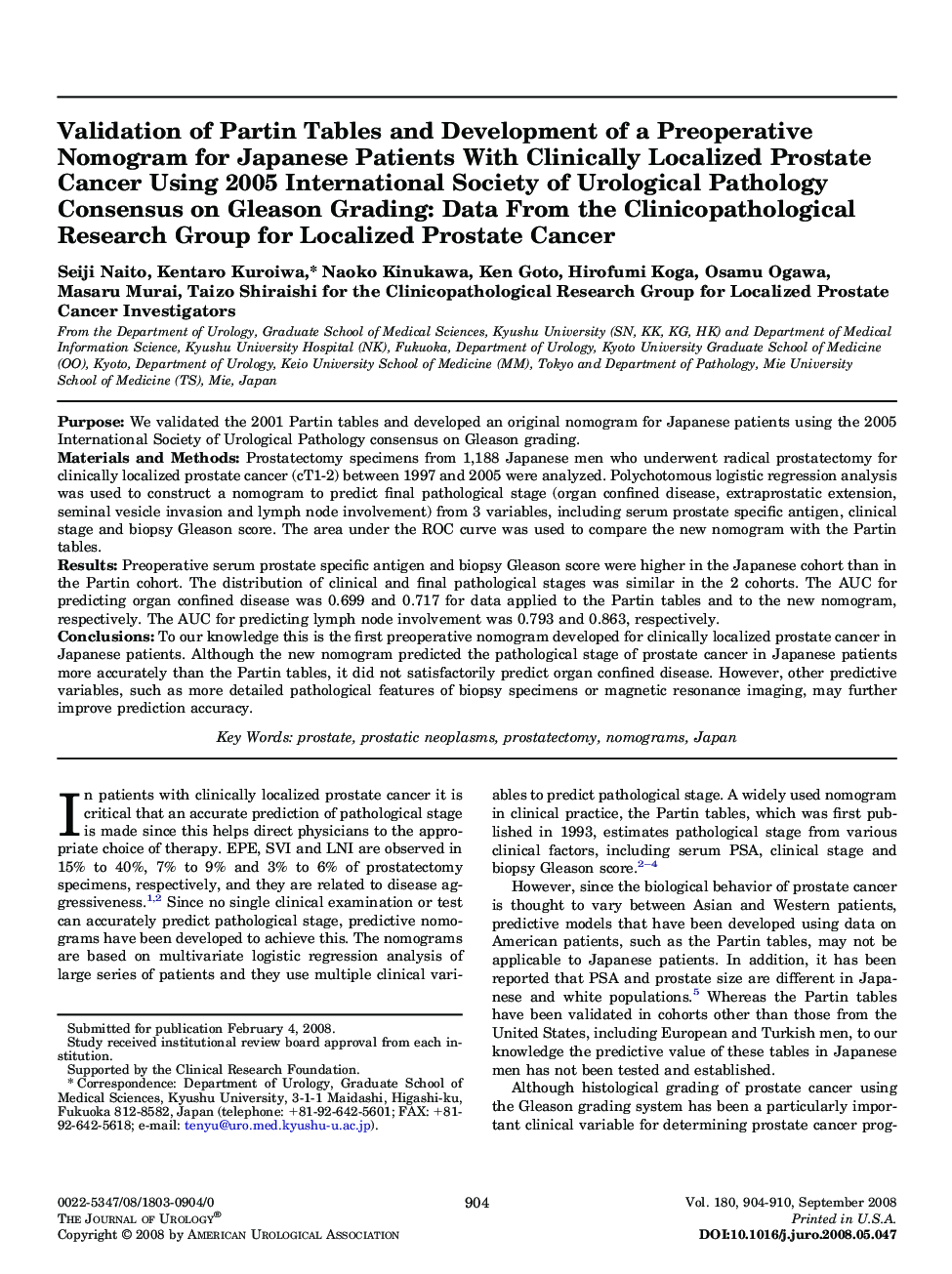| Article ID | Journal | Published Year | Pages | File Type |
|---|---|---|---|---|
| 3872812 | The Journal of Urology | 2008 | 7 Pages |
PurposeWe validated the 2001 Partin tables and developed an original nomogram for Japanese patients using the 2005 International Society of Urological Pathology consensus on Gleason grading.Materials and MethodsProstatectomy specimens from 1,188 Japanese men who underwent radical prostatectomy for clinically localized prostate cancer (cT1-2) between 1997 and 2005 were analyzed. Polychotomous logistic regression analysis was used to construct a nomogram to predict final pathological stage (organ confined disease, extraprostatic extension, seminal vesicle invasion and lymph node involvement) from 3 variables, including serum prostate specific antigen, clinical stage and biopsy Gleason score. The area under the ROC curve was used to compare the new nomogram with the Partin tables.ResultsPreoperative serum prostate specific antigen and biopsy Gleason score were higher in the Japanese cohort than in the Partin cohort. The distribution of clinical and final pathological stages was similar in the 2 cohorts. The AUC for predicting organ confined disease was 0.699 and 0.717 for data applied to the Partin tables and to the new nomogram, respectively. The AUC for predicting lymph node involvement was 0.793 and 0.863, respectively.ConclusionsTo our knowledge this is the first preoperative nomogram developed for clinically localized prostate cancer in Japanese patients. Although the new nomogram predicted the pathological stage of prostate cancer in Japanese patients more accurately than the Partin tables, it did not satisfactorily predict organ confined disease. However, other predictive variables, such as more detailed pathological features of biopsy specimens or magnetic resonance imaging, may further improve prediction accuracy.
